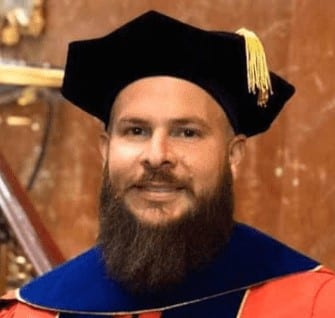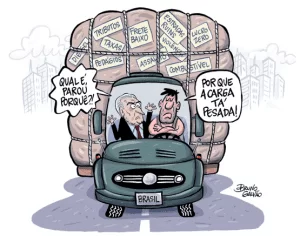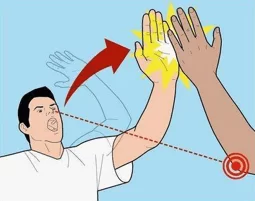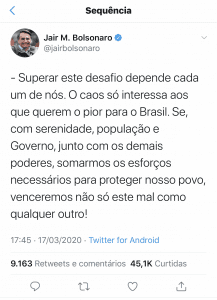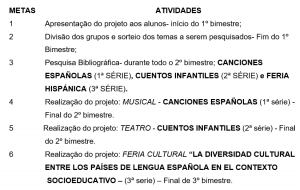ORIGINAL ARTICLE
MALDONADO, Gabriel Orlando Quiñones [1]
MALDONADO, Gabriel Orlando Quiñones. Analysis: Life history and interactive narratives in the context of the Coronavirus pandemic. Revista Científica Multidisciplinar Núcleo do Conhecimento. Year 05, Ed. 08, Vol. 02, pp. 28-35. August 2020. ISSN: 2448-0959, Access Link: https://www.nucleodoconhecimento.com.br/lyrics/history-of-life, DOI: 10.32749/nucleodoconhecimento.com.br/lyrics/history-of-life
SUMMARY
This article is based on the area of Interactional Sociolinguistics and proposes the analysis of excerpts concerning a life story and interactive narratives in contexts of the Coronavirus pandemic. A first written corpus and a second oral corpus based on life narratives were collected as reference. In this analysis of life stories and interactive narratives in the context of Coronavirus disease we have a discursive sequence that allowed us to evaluate and interpret a tale and several experiences lived in this pandemic time that our planet has faced up to the moment of data collection.
Keywords: Interactional Sociolinguistics, life story, interactive narrative.
1. INTRODUCTION
The unexpected arrival of Coronavirus has caused significant changes in humanity. The everyday life we knew was modified, altered and even suspended for a long period of quarantine. According to Goffman (1967, p. 135): “when an incident occurs and spontaneous involvement is threatened, reality is threatened.” We have all seen the need to modify the social, emotional and spiritual environment due to the fear of contagion by this virus that, unaware of its origin and its eradication, silently attacks us. Thus: “they will be forced to accept some events as conventional or natural signs of something that is not directly available to the senses” (Idem, p. 140, my translation). With this situation, new life narratives began to emerge. History takes a new direction that will mark the birth of a new humanity, which will develop with new civil codes, new social forms and with more environmental awareness.
2. THE INTERACTIONAL SOCIOLINGUISTICS
Investigations based on Interactional Sociolinguistics are a great way to contribute to the understanding of the most different social interactions that occur daily in our lives, at different times. The available resources contribute to the understanding of life stories, interactive narratives and it is possible to better know the starting point of the different interactions. In the professional sphere, teachers, linguists or interested in this area, with these resources provided by Interactional Sociolinguistics, can better understand the people around them. In addition, one can achieve the best practices of conversational interactions.
According to Gumperz (1982, pp. 24-25), “the sociolinguist who works in this tradition begins by recording the daily discourse of selected speakers according to sociological sampling criteria as representative of a particular group or community and not according to family history criteria”. It goes on to state that it is also not in accordance with ” […] linguistic training, as in previous dialectical studies. In addition, the procedures for obtaining it start from conventional methods of dialect questionnaire, in which speakers are questioned directly and asked to illustrate or produce speech samples” (Idem).
3. ANALYSIS OF LIFE STORIES
Life stories represent a research property of Interactional Sociolinguistics that provides an explanation about events and customs to know what a person is like and how he develops in society. This presents the actions of an individual as a representative and collaborator of social life from the narration of the events experienced and the transmission of his life experience. This includes the accumulated statements about the subject’s life: schooling, health, family, among others, made by the researcher, who acts as narrator, moderator and rapporteur. With the life narratives collected through interviews, an individual testimony of a person regarding the events that put them in contact with what he wants to transmit to us from his narration is obtained.
A lived fact is narrated with its cause and development, with progressions or regressions. In this context, it can be seen that the narratives investigated are rich in terms of history, since the fields of psycholinguistics and cognitive psychology and development are currently admitted: “[…] however, few of them can capture the bidirectional nature of narratives and the interactive role of local and global pressures in the production and understanding of narrative” (BAMBERG; MARCHMAN, 1990, p. 61).
3.1 ANALYSIS: “MY HERO IS YOU”. HOW CHILDREN CAN FIGHT COVID-19!
The fundamental objective of this analysis is to deepen a little more the knowledge about the structure and development of life stories. In this case, I define stories as a tale in which the narration will penetrate the current living conditions, gathering important data from the beginning, in the plot and at the end of the narration, in order to capture the reader’s attention, in this case, the children. The development of this story “My Hero is You” takes shape from a simple vocabulary on how to adapt to the new lifestyle caused by the Coronavirus pandemic. According to Bamberg and Marchman (1990, p. 112), “each event is seen in the context of the narrative, in order to obtain an understanding of the relationship between the structure of history and its linguistic manifestation”.
Figure 1: My hero is you
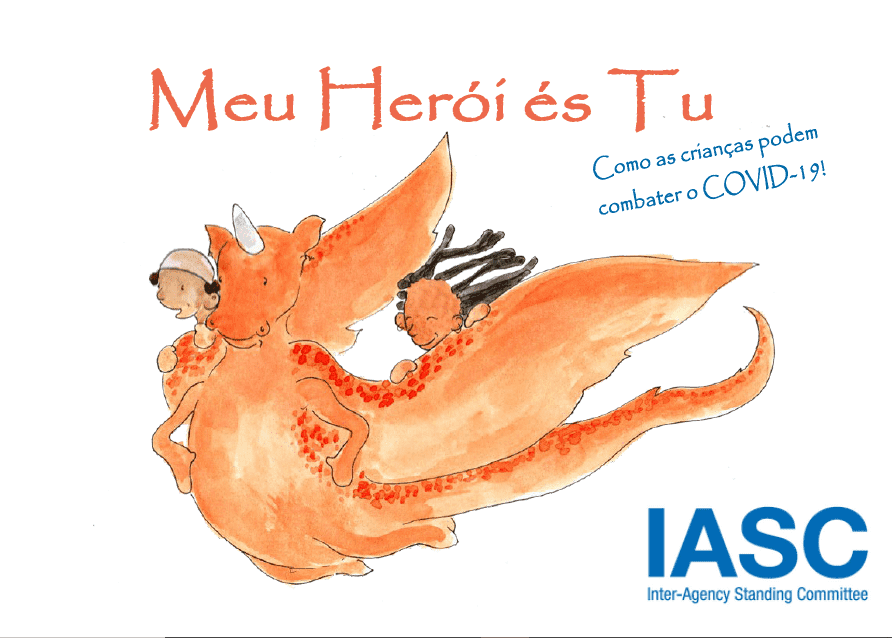
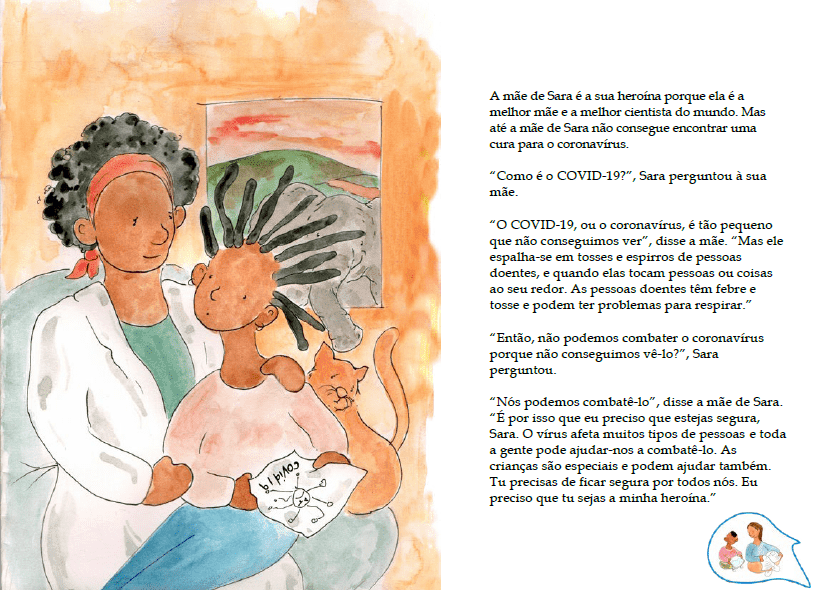
It is a short narrative, which presents real events, whose origin is the life story of humanity in this pandemic. The goal is to guide children about controlling their safety, family and friends. From “My Hero is You”, many important aspects can be worked out for the linguistic development of children. According to Bamberg and Marchman (1990, p. 60), “by telling a simple story, children face the task of choosing their perspective. At the same time, they must communicate perspective within the limits of the linguistic means available to them.” In this life story, we see a short story adapted with images and written text, in which the current situation of COVID-19 is narrated with a view to emphasizing that all characters are heroes representative of our real environment.
According to Bamberg and Marchman (1990, p. 63), “several linguistic contrasts in a simple figurebook narrative were investigated for their role in the discursive definition of the limits of episodes and for contributing to the establishment of a coherent structure of history.” In the story there is a narrator who takes the reader or listener along a path from the initial situation, which develops and complicates, constituting the conflict or the node, until reaching the result or solution. In the initial situation, time and narrative space prevail, which serve as a structure for narration. This story is narrated in the present time of the indicative, as it was produced during the active events of Coronavirus.
Later, let us hope that this narration will be used with the verbal times of the former, so we could say that the worst of Covid-19 is over. According to Lopes (1996, p. 360), “events are ordered temporally within the text, as a function of each other, and the relative temporal location is gradually altered/constructed by the discursive dynamics itself.”
Excerpt 1: “Sara’s mother is your heroine because she is the best mother and the best scientist in the world. But even Sara’s mother can’t find a cure for the coronavirus.”
The main idea is the starting point of the story, it is the essence of what the tale wants to express, since the Covid-19 is real. One of the ideas presented is how to make people understand, from the narration of this current life story, the problems that are presented by the characters so that children can use their linguistic abilities to understand and face their new social coexistence of life. This story could also be used in the classroom Portuguese Language. According to Bamberg and Marchman (1990, p. 59), “the narrative monologue is chosen as a database to investigate in more detail the linguistic knowledge of children in their actual use.” For example, not being able to attend school due to contagion problems by Covid-19.
Excerpt 2: “How is COVID-19?” Sara asked her mother.
Excerpt 3: “THE COVID-19, or the coronavirus, is so small that we can’t see it,” the mother said. “But it spreads in coughs and sneezing from sick people, and when they touch people or things around them. Sick people have fever and cough and may have trouble breathing.”
Next, the analysis of interactive narratives is presented in a contextualized way.
4. ANALYSIS OF INTERACTIVE NARRATIVES IN CONTEXT
The direct discourse in the narratives of life shows us the different events that people go through every day. Macaulay (1987) indicates that the speaker must recreate this narration through the expression in his words. According to Macaulay (1987, p. 29), “the use of the quoted direct discourse adds vivacity to a narrative, offers the possibility of a different perspective and can give an impression of an authentic memory of an event, although it is not wise to assume that it necessarily reports the actual words used.” He also alludes to that: “[…] by appealing to quote the actual words spoken, the speaker is giving the listener the opportunity to interpret the statement without the risk of being distorted by the way it is reported.”
4.1 ANALYSIS: PEOPLE FACING COVID-19 TELL WHAT LIFE AFTER ILLNESS IS LIKE
The life narratives transmitted by CBN agree with the account of several people who faced Covid-19. The life stories these people offer serve as an interpretive structure from which we obtain the feeling of human experience when facing the Covid-19 pandemic.
[…] in the analysis of life experience narratives in radio broadcasts, participants spontaneously perform local identities, relevant to the construction of an image of themselves with a certain status: participants ratified or as “experts”, identified according to parameters such as sex, profession, age or relative to a lived history, as a testimony of an experience they want to see shared (ALMEIDA , 2011, pp. 11-12).
Let us pay attention to the interview that the reporter Matheus Meirelles did to several Brazilians around the world.
- Broadcaster: CBN Radio (Central Brasileira de Notícias) in São Paulo.
- Duration: 04.58
- Reporter: Matheus Meirelles
- Interviewees: Various
In this interview, the reporter plays the role of moderator announcer to control the time that may have been made available to perform the different narrations. The reporter makes an introduction narrating that, after 6 months elapsed from the Covid-19 pandemic, these life narratives began to emerge based on experience with the disease affecting our planet.
Narrator: The coping and overcoming of coronavirus have changed the lives of many people in Brazil and in the world. The stories, the memories and, mainly, the physical and psychological sequelae become part of the day-to-day life of the population. For patients and physicians who have faced Covid-19, a possible vaccine or cure for the disease does not mean an end point (MEIRELLES, 2020, s.p).
The narrator makes the introduction to each person interviewed, thus presenting the characterization of age, studies, profession and even the country or state in which they were established at the precise moment of their life narrative. With the action of the narrator, it is perceived that the main point is to know the stories, experiences, feelings and emotions of people before Covid-19 and what their life after the disease is like. According to Günthner (2011), indexicality enhances or expands the ability to understand how concepts such as identity, emotions, affective positions and ideology work in interaction.
Excerpt: 3
→ Narrator: “Mariana Diamantino, a 31-year-old student, holds a doctorate in law in Paris, France. Away from home, he received a negative diagnosis for the disease, but was startled by the symptoms.”
→ Interviewee 1: “I was lucky to have a bland version, let’s say. If I’m going to take a positive lesson from this, it’s made it possible to have a real dimension of the impact on individual physical health, to empathize with people who have undergone hospital treatment and for the deaths that have occurred.”
Excerpt 4:
→ Narrator: “In Brazil, in São Paulo, Rosana Melo, 54, also began to reflect after the diagnosis. For her, the disease proves that there are situations that can not be controlled.”
→ Interviewee 2: “Doctors don’t give us a certainty. They’re in the fight, too. What’s going to change is that the people who’ve been through this, each have a personal experience. It also shows that we don’t have the power of anything, we can’t control anything.”
Excerpt 5:
→ Narrator: “In Rio de Janeiro, the icu nursing technician of the Samaritano Hospital, Júnior César de Oliveira, was on the front line of the fight against Covid-19. He even had suspected brain death, but recovered and is in the rehabilitation phase. Now it gives more value to the little things.”
→ Interviewee 3: “After Covid, you start giving a lot more value to people, to little things. The breathing, the drinking water. Look at each other more fondly, have more sympathy with others. I get really scared, you know, of seeing people not wearing a mask. It’s a very cruel disease. I lost 20 kilos in 35 days. It’s a disease that takes away from you the most important good, which is breathing. You are drowning awake” (MEIRELLES, 2020, s.p).
In these excerpts, there are underlined phrases in which the interviewees narrate in the verbal tense of the past their life histories. The sentences were underlined for the analysis of these narrations. The interactive narratives of these people are based on the context of Covid-19 disease. The verbal times of the narrative vary with the evolution of interventions in which we see good cohesion and coherence. According to Lopes (1996, p. 353), “the relationship of anteriority in relation to that of the enunciation is basically expressed by the Simple Perfect Pretérito and the Imperfect; the relationship of concurrency is given by the Present and the relationship of posteriority finds linguistic expression in the Future.” We also have other verbal times such as:
The future of the subjunctive: → Excerpt 3 interviewee 1: “if I’m going to take a lesson”.
The present of the indicative: → Excerpt 4 interviewee 2: “Doctors do not give a certainty to us”.
The near future: → Excerpt 4 interviewee 2: “What will change is…”
Adjunct temporal adverbial ‘after’: In this passage we see a temporal progression in the narration: → Excerpt 5 interviewee 3: “After Covid…”
With this analysis, it is evident the importance of using these narratives to understand all the future reflexes of Covid-19.
FINAL CONSIDERATIONS
In this analysis of life stories and interactive narratives in the context of Coronavirus disease, we have a discursive sequence that allowed us to evaluate and interpret a tale and several experiences lived in this pandemic time. According to Bastos and Biar, (2015), it can be said that the analyses are qualitative and interpretive in nature, interested, as it was said, in what happens in social life. In conclusion, the first analysis of the story “My Hero is You” shows the narrative of the current life of our humanity. A story in which it is narrated in the verbal tense of the present of the indicative, and, over time, this narrative will be seen as a story of life passed in the year 2020. With the second analysis, the life narratives of several people scattered around the world are presented, in which they express their feelings, emotions and experiences lived in the Covid-19 pandemic in the first six months of 2020.
REFERENCES
ALMEIDA, C. A. de. Aspectos semânticos e pragmáticos da co-construção de identidades discursivas em narrativas de experiência de vida produzidas por participantes de emissões nocturnas de rádio” In: COSTA, A.; FALÉ, I.; BARBOSA, P. (Orgs.) Textos Selecionados XXVI Encontro Nacional da Associação Portuguesa de Linguística. Lisboa: APL, 2011, pp. 35-48.
BAMBERG, M.; MARCHMAN, V. A. What holds a narrative together? The linguistic encoding of episode boundaries. IPrA Papers in Pragmatics, v. 4, n. 1-2, p. 58-121, 1990.
BASTOS, L. C.; BIAR, L. de. A. Análise de narrativa e práticas de entendimento da vida social. DELTA: Documentação e estudos em linguística teórica e aplicada, v. 31, n. 4, 2015.
Fundo das Nações Unidas para a Infância – UNICEF. (2020). Meu Herói és Tu. Como as crianças podem combater a COVID-19! 2020. Disponível em: https://www.unicef.org/brazil/comunicados-de-imprensa/livro-de-historias-infantis-lancado-para-ajudar-criancas-a-lidar-com-a-covid-19. Acesso em: 03 ago. 2020.
GOFFMAN, E. Interaction Ritual. New York: Doubleday Anchor, 1967.
GUMPERZ, J. Discourse strategies. Cambridge: Cambridge University Press, 1982.
GÜNTHNER, S. The construction of emotional involvement in everyday German narratives–interactive uses of ‘dense constructions. Pragmatics, v. 21, n. 4, p. 573-592, 2011.
LOPES, A. C. M. Tempo, aspecto e coesão discursiva. Actas do XI Encontro Nacional da Associação Portuguesa de Linguística, v. 3, p. 351-371, 1996.
MACAULAY, R. K. S. Polyphonic monologues: Quoted direct speech in oral narratives. IPRA Papers in Pragmatics, v. 1, n. 2, p. 1-34, 1987.
MEIRELLES, M. Pessoas que enfrentaram a Covid-19 contam como é a vida após a doença. CBN Globo Rádio. 2020. Disponível em: https://cbn.globoradio.globo.com/media/audio/306729/pessoas-que-enfrentaram-covid-19-contam-como-e-vid.htm. Acesso: 03 ago. 2020.
[1] Post-doctor in Education with research in Brazilian Musical Sociolinguistics from the Virtual University of Higher Studies – UNIVES in Mexico (2020); PhD in Portuguese Language Teaching from Bircham International University in Madrid Spain (2018); Master in Languages, Cultures and Societies in Multilingual Environments – French Foreign Language by the “Université des Antilles” in Martinique (M1-2016 / M2-2018); Postgraduate (Specialization) in Portuguese Language Studies: Research and Teaching by the Open University of Portugal (2014): Graduated in Modern Languages, qualification in Portuguese and French, from the Universidad de Puerto Rico – Río Pedras Enclosure (2009).
Sent: July, 2020.
Approved: August, 2020.
